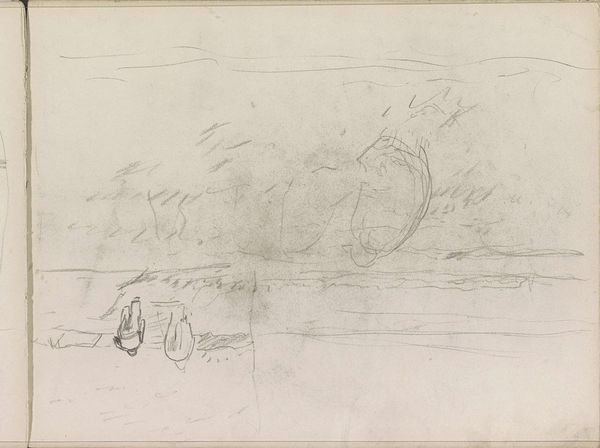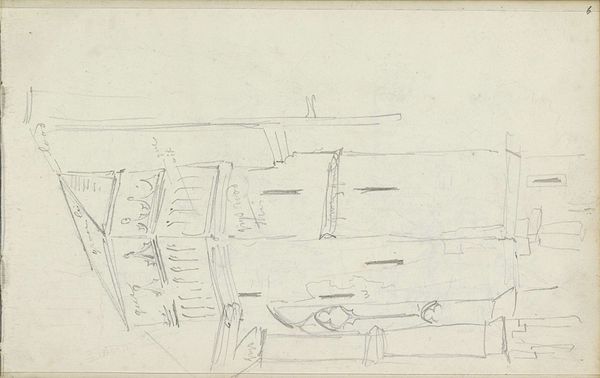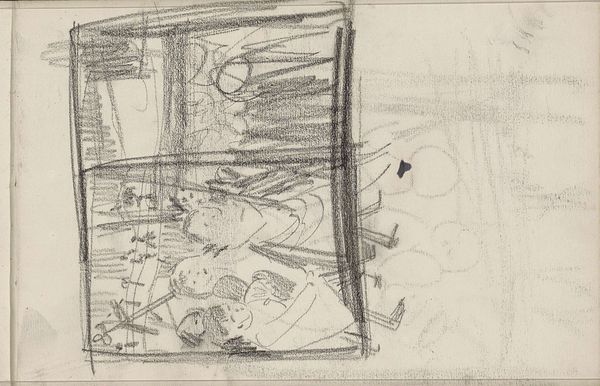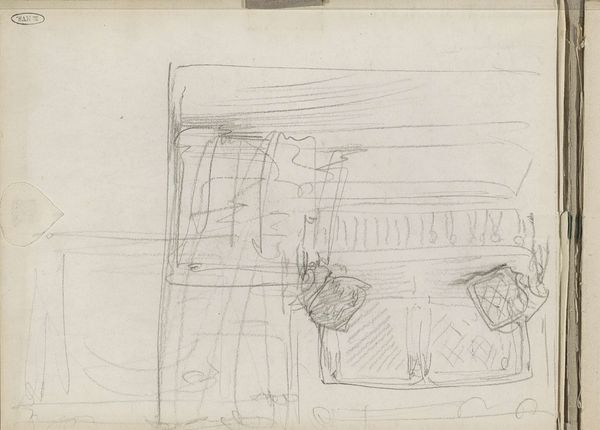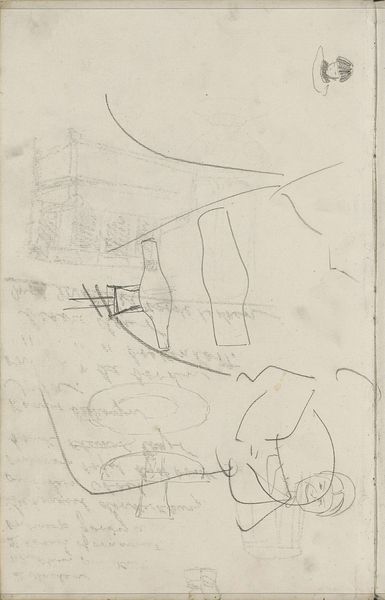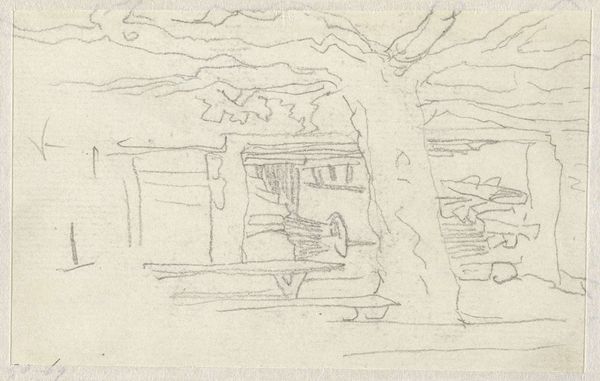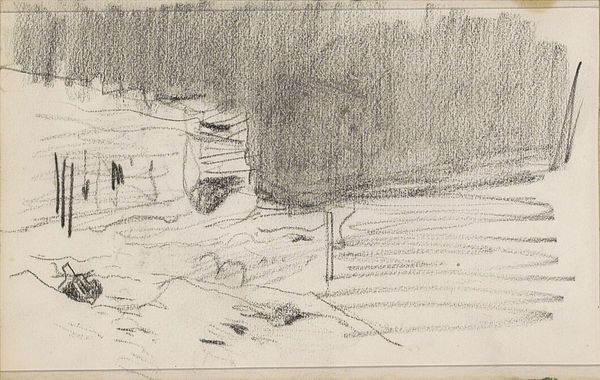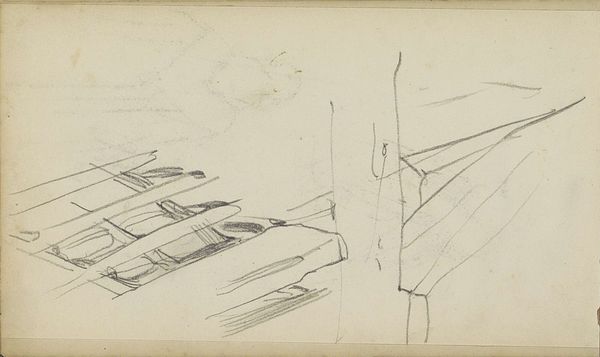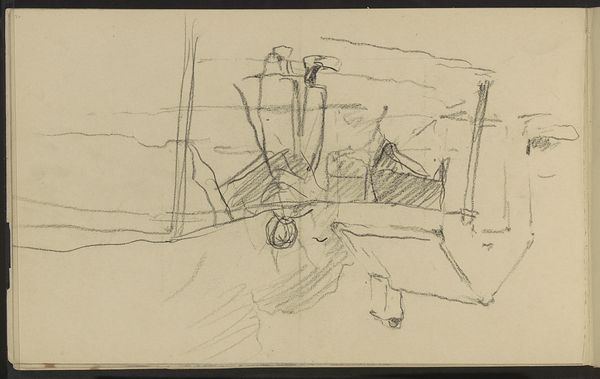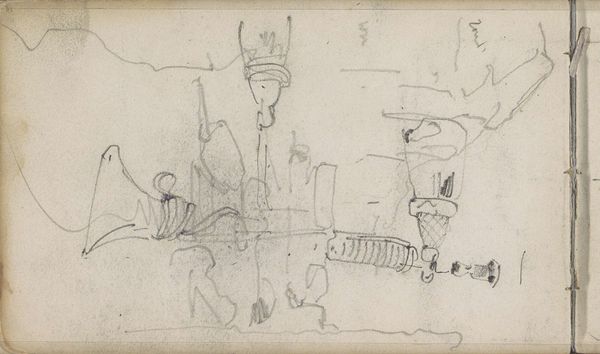
drawing, pencil
#
drawing
#
landscape
#
pencil
#
christianity
#
line
#
russian-avant-garde
#
history-painting
#
christ
Copyright: Public domain
Curator: Immediately striking, isn't it? This is Nicholas Roerich's "Nicola," a pencil drawing created in 1916. Editor: It’s…sparse. Almost skeletal in its rendering. There's a haunting stillness despite the apparent movement suggested by the lines. Curator: Indeed. Let's consider Roerich's materials and technique here. He employed a deliberately simplified linework. The visible hatching and rapid strokes are incredibly economical and, one might say, urgent. We see the evidence of process right on the page, from the graphite itself to the very act of sketching. Editor: I am intrigued by this simplicity too. This was during World War I and on the brink of the Russian Revolution. The rendering of Christ as an almost absent figure echoes that sentiment, and makes me wonder about how historical conditions and social anxieties feed into the work, specifically in how it represents power. What would the public make of this? How would the church and state react to such bare bones imagery of faith and patriotism? Curator: That’s a crucial point. He often incorporated sacred themes into his landscapes, presenting the sacred as integral to the land itself. Editor: I notice also, the buildings on this land are very centered here. Let's look at the use of architectural elements that define the built world for centuries, yet it feels unstable here, as a mere collection of pencil strokes could at any moment dissolve back to earth. The image makes the audience question which form of institution—church, nation, Christ—offers protection during turbulent times, and where their place truly stands within such complex societal struggles. Curator: We can analyze Roerich’s body of work as highlighting not the aesthetic end-result, but the artist’s engagement with his environment—and how labor within that context results in tangible artworks like this drawing. Editor: Roerich's approach encourages a deeper thinking process for both him as the maker and us, his viewers. A work such as this, prompts us to recognize how history continues shaping visual landscapes and informs what they communicate across time and culture. Curator: Examining Roerich’s commitment to rendering landscapes that reflect social concerns encourages discussions about art as more than aesthetic practice but material interventions in society itself. Editor: And further contextualizes it within evolving and multifaceted political struggles in the region even today. Curator: Precisely, leaving us much to consider regarding labor, faith, and materiality as represented on the picture plane and in the social sphere. Editor: Definitely, it gives a new dimension of thinking about the landscape not just as a physical landform but more as an intersection of ideology, identity, and political tensions.
Comments
No comments
Be the first to comment and join the conversation on the ultimate creative platform.
